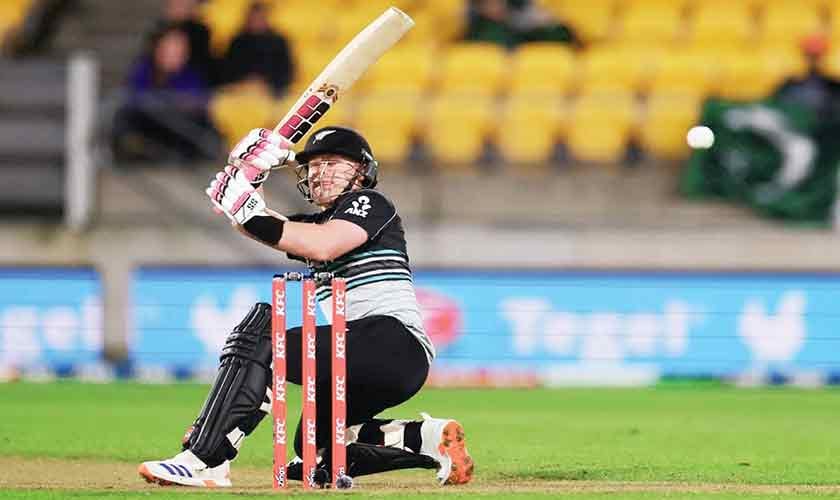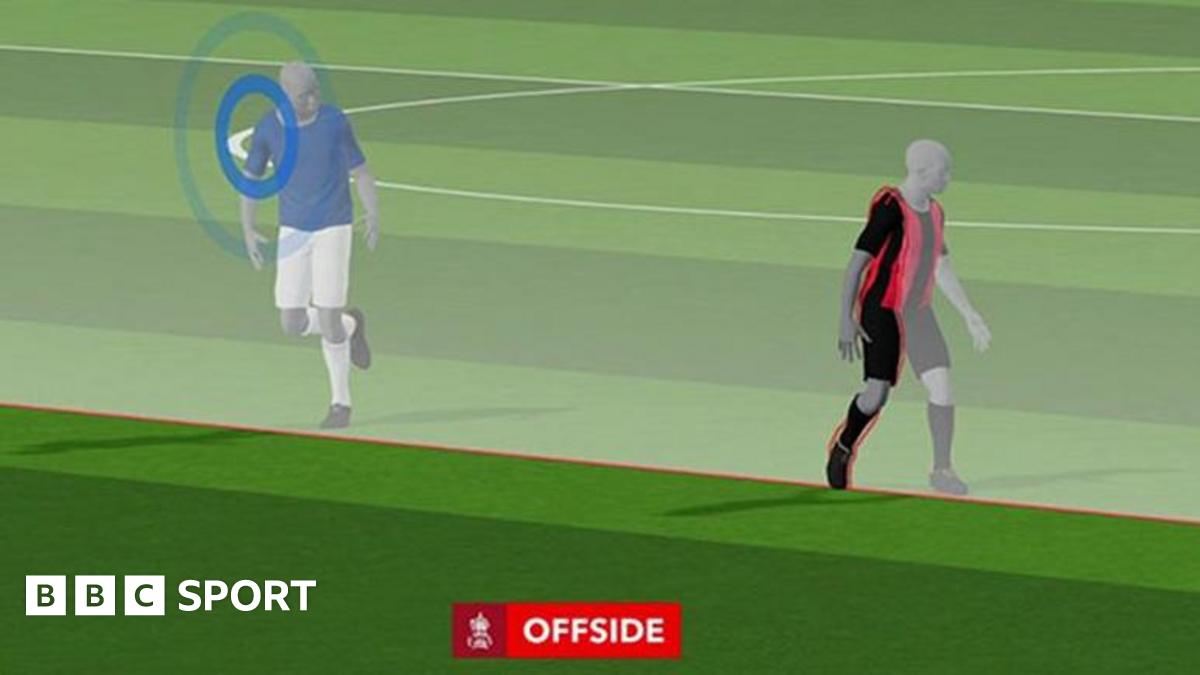Pakistan-New Zealand Series: A disparity between two teams

Pakistan suffered a humiliating loss in the T20I series against New Zealand by 1-4 the other day. This series showcased a stark disparity between the two teams, with New Zealand demonstrating superiority in every aspect of the game.
Apart from a spirited performance in the third T20I, where Pakistan managed to put up a fight, the team struggled to maintain any resistance throughout the series in both batting and bowling departments.
New Zealand’s openers, Tim Seifert and Finn Allen, played pivotal roles in securing the series victory with explosive batting from the outset. Their aggressive style allowed them to dominate the Pakistani bowlers, treating them almost as if they were facing a club-level team and making it difficult for Pakistan to mount a comeback. Even in the game that New Zealand lost, they managed to score over 200 runs, illustrating their offensive prowess.
Throughout the series, New Zealand’s pace attack proved to be formidable, stifling Pakistan’s batting lineup as the newcomers found it challenging to adjust to the pace and bounce of the pitches.
Although Pakistan sought to embrace a fearless brand of cricket with significant changes to their lineup, their approach lacked the necessary strategy, leading to a series of one-sided matches that left fans yearning for more competitive contests.
In contrast, New Zealand can take pride in their depth of talent and preparations for the upcoming World Cup, having showcased their dominance in the series, aside from the one setback.
Following the Pakistan cricket team’s disappointing early exit from the Champions Trophy 2025, held in Pakistan and Dubai earlier this month, the management implemented significant changes to the squad. This overhaul included several new players and notably omitted some familiar names.
In the wake of this disappointing performance, skipper Mohammad Rizwan and top batsman Babar Azam were dropped from the T20I squad for the upcoming tour of New Zealand, while fast bowler Shaheen Shah Afridi was left out of the ODI series.
The primary reason for these extensive changes was the batsmen’s strike rates during the Champions Trophy, which contributed to the team’s premature elimination from the tournament.
Keeping the T20 World Cup scheduled for next year and the Asia Cup set to take place later this year, Pakistan have opted for a young T20I squad led by newly-appointed captain Salman Ali Agha whobecome the fourth T20I captain for Pakistan since January 2024.
Pakistan Cricket Board (PCB) have changed nearly 16 coaches and 26 selectors in the last three years or so that showed inconstancy in the management and the team.
After appointing as skipper, Salman Ali Agha has promised to deliver a brand of “fearless cricket”in New Zealand.
In the T20I series against New Zealand, young guns failed miserably. Batsmen failed to coup with the conditions and lost the series without any fight.
Despite the absence of senior players, New Zealand have dominated the series against a side trying to refine their approach.
In the third game, opener Hassan Nawaz who failed to open his account in the first two matches showed some class and scored fast T20I century (42 balls) from Pakistan and with skipper Salman Agha surprisingly chased a mammoth target of 205 in the 17th over and the keep the series alive.
But in the next game, green shirts back on their actual position, bowled out on just 105 runs while chasing 221 and faced one of their T20I biggest defeat of 115 runs.
However, a worrying trend has emerged among young Pakistani batsmen-they often prioritize aggressive stroke play over understanding pitch conditions and analyzing the opposition bowlers. This over-reliance on power hitting rather than smart, situational play has led to inconsistent performances, particularly in crucial matches.
Many young Pakistani cricketers, influenced by the rise of T20 cricket, attempt to attack every delivery rather than constructing an innings with patience and strategy. This approach often backfires, leading to batting collapses and wasted opportunities. Unlike experienced players who assess the pitch behavior, recognize bowlers’ strengths, and adapt accordingly, younger batsmen tend to throw their wickets away in pursuit of quick runs.
A prime example is the frequent struggle of Pakistan’s batting lineup in challenging conditions, particularly on seaming tracks or slow, turning pitches. Instead of adjusting their game, batsmen often play extravagant shots without considering the movement of the ball or the quality of the opposition’s attack.
To succeed at the highest level, young Pakistani batsmen must learn to balance aggression with intelligent shot selection. Players like Babar Azam and Mohammad Yousuf have demonstrated the importance of reading the game, rotating the strike, and waiting for loose deliveries.
Aggression without a strategic approach can often lead to a team’s downfall rather than its success. While aggression can be a powerful tool to dominate opponents, its reckless use can cause more harm than good, leading to poor decision-making, unnecessary conflicts, and missed opportunities.
When aggression is not backed by proper judgment, it becomes a liability rather than an asset. Over-aggressive batting without assessing the match situation can lead to reckless shots and quick dismissals. Players who try to hit every ball out of the park often fail under pressure, causing collapses that cost their team dearly. A balanced approach, where batsmen choose the right moments to attack, is essential for consistent performance.
Young Pakistani opener Hasan Nawaz tried to attack from the beginning, but except one innings where he scored century, he got three ducks and 1 run in the other inning. He should learn the difference of aggression and sensible batting according to conditions.
Pakistan’s batting performance in the series, has been quite troubling, as players opted for aggressive shots without fully evaluating the conditions. While aggression has its place, it shouldn’t transform into reckless swings that lead to quick wickets and unnecessary pressure on the middle order.
New Zealand pitches are tricky for batsmen, with variable bounce and pace, which exposed weaknesses in Pakistan’s batting lineup.
It is a common practice that new players are given a chance in home series so that they can get a good start on their tried and tested pitches or that youngsters are tested on tours of other weaker teams, but the practice is different in Pakistan, where new players are given a chance on difficult tours in New Zealand, Australia, South Africa, where even experienced Pakistani players do not have a good record.
New Zealand’s opener Tim Louis Seifert was the most successful batsman of the series with 249 runs with a high strike rate of 207.50. His 22 sixes and 20 fours in five matches proved his aggression.
From Pakistan, skipper Agha Salman scored most (167) runs for Pakistan with the help of two fifties, averaging 41.75 and a strike rate of 135.77.
On the bowling side, New Zealand’s fast bowler Jacob Duffy taken most 13 wickets with the average of just 8.38 and a strike rate of 8.15.
Haris Rauf taken most eight wickets for Pakistan at an average of 12.25 and a strike rate of 9.75. Surprisingly, Shaheen Shah Afridi in favourable conditions managed only 2 wickets in four matches with a high average of 66.50 while his economy rate remains 10.23.
Allrounder Shadab Khan who made a surprise comeback in the team failed to prove his selection as he has taken only one wicket in five matches after conceding 143 runs, his economy rate 11 also aconcern for the team.
Other spinners Abrar Ahmed and Sufiyan Muqeem performed much better than Shadab and managed five and one wicket in three and one match respectively.
Coaches and senior players must emphasize the importance of adaptability, patience, and match awareness. If young Pakistani cricketers develop these skills, they can become more reliable and consistent performers on the international stage, ensuring greater success for the national team.
khurrams87@yahoo.com
Apart from a spirited performance in the third T20I, where Pakistan managed to put up a fight, the team struggled to maintain any resistance throughout the series in both batting and bowling departments.
New Zealand’s openers, Tim Seifert and Finn Allen, played pivotal roles in securing the series victory with explosive batting from the outset. Their aggressive style allowed them to dominate the Pakistani bowlers, treating them almost as if they were facing a club-level team and making it difficult for Pakistan to mount a comeback. Even in the game that New Zealand lost, they managed to score over 200 runs, illustrating their offensive prowess.
Throughout the series, New Zealand’s pace attack proved to be formidable, stifling Pakistan’s batting lineup as the newcomers found it challenging to adjust to the pace and bounce of the pitches.
Although Pakistan sought to embrace a fearless brand of cricket with significant changes to their lineup, their approach lacked the necessary strategy, leading to a series of one-sided matches that left fans yearning for more competitive contests.
In contrast, New Zealand can take pride in their depth of talent and preparations for the upcoming World Cup, having showcased their dominance in the series, aside from the one setback.
Following the Pakistan cricket team’s disappointing early exit from the Champions Trophy 2025, held in Pakistan and Dubai earlier this month, the management implemented significant changes to the squad. This overhaul included several new players and notably omitted some familiar names.
In the wake of this disappointing performance, skipper Mohammad Rizwan and top batsman Babar Azam were dropped from the T20I squad for the upcoming tour of New Zealand, while fast bowler Shaheen Shah Afridi was left out of the ODI series.
The primary reason for these extensive changes was the batsmen’s strike rates during the Champions Trophy, which contributed to the team’s premature elimination from the tournament.
Keeping the T20 World Cup scheduled for next year and the Asia Cup set to take place later this year, Pakistan have opted for a young T20I squad led by newly-appointed captain Salman Ali Agha whobecome the fourth T20I captain for Pakistan since January 2024.
Pakistan Cricket Board (PCB) have changed nearly 16 coaches and 26 selectors in the last three years or so that showed inconstancy in the management and the team.
After appointing as skipper, Salman Ali Agha has promised to deliver a brand of “fearless cricket”in New Zealand.
In the T20I series against New Zealand, young guns failed miserably. Batsmen failed to coup with the conditions and lost the series without any fight.
Despite the absence of senior players, New Zealand have dominated the series against a side trying to refine their approach.
In the third game, opener Hassan Nawaz who failed to open his account in the first two matches showed some class and scored fast T20I century (42 balls) from Pakistan and with skipper Salman Agha surprisingly chased a mammoth target of 205 in the 17th over and the keep the series alive.
But in the next game, green shirts back on their actual position, bowled out on just 105 runs while chasing 221 and faced one of their T20I biggest defeat of 115 runs.
However, a worrying trend has emerged among young Pakistani batsmen-they often prioritize aggressive stroke play over understanding pitch conditions and analyzing the opposition bowlers. This over-reliance on power hitting rather than smart, situational play has led to inconsistent performances, particularly in crucial matches.
Many young Pakistani cricketers, influenced by the rise of T20 cricket, attempt to attack every delivery rather than constructing an innings with patience and strategy. This approach often backfires, leading to batting collapses and wasted opportunities. Unlike experienced players who assess the pitch behavior, recognize bowlers’ strengths, and adapt accordingly, younger batsmen tend to throw their wickets away in pursuit of quick runs.
A prime example is the frequent struggle of Pakistan’s batting lineup in challenging conditions, particularly on seaming tracks or slow, turning pitches. Instead of adjusting their game, batsmen often play extravagant shots without considering the movement of the ball or the quality of the opposition’s attack.
To succeed at the highest level, young Pakistani batsmen must learn to balance aggression with intelligent shot selection. Players like Babar Azam and Mohammad Yousuf have demonstrated the importance of reading the game, rotating the strike, and waiting for loose deliveries.
Aggression without a strategic approach can often lead to a team’s downfall rather than its success. While aggression can be a powerful tool to dominate opponents, its reckless use can cause more harm than good, leading to poor decision-making, unnecessary conflicts, and missed opportunities.
When aggression is not backed by proper judgment, it becomes a liability rather than an asset. Over-aggressive batting without assessing the match situation can lead to reckless shots and quick dismissals. Players who try to hit every ball out of the park often fail under pressure, causing collapses that cost their team dearly. A balanced approach, where batsmen choose the right moments to attack, is essential for consistent performance.
Young Pakistani opener Hasan Nawaz tried to attack from the beginning, but except one innings where he scored century, he got three ducks and 1 run in the other inning. He should learn the difference of aggression and sensible batting according to conditions.
Pakistan’s batting performance in the series, has been quite troubling, as players opted for aggressive shots without fully evaluating the conditions. While aggression has its place, it shouldn’t transform into reckless swings that lead to quick wickets and unnecessary pressure on the middle order.
New Zealand pitches are tricky for batsmen, with variable bounce and pace, which exposed weaknesses in Pakistan’s batting lineup.
It is a common practice that new players are given a chance in home series so that they can get a good start on their tried and tested pitches or that youngsters are tested on tours of other weaker teams, but the practice is different in Pakistan, where new players are given a chance on difficult tours in New Zealand, Australia, South Africa, where even experienced Pakistani players do not have a good record.
New Zealand’s opener Tim Louis Seifert was the most successful batsman of the series with 249 runs with a high strike rate of 207.50. His 22 sixes and 20 fours in five matches proved his aggression.
From Pakistan, skipper Agha Salman scored most (167) runs for Pakistan with the help of two fifties, averaging 41.75 and a strike rate of 135.77.
On the bowling side, New Zealand’s fast bowler Jacob Duffy taken most 13 wickets with the average of just 8.38 and a strike rate of 8.15.
Haris Rauf taken most eight wickets for Pakistan at an average of 12.25 and a strike rate of 9.75. Surprisingly, Shaheen Shah Afridi in favourable conditions managed only 2 wickets in four matches with a high average of 66.50 while his economy rate remains 10.23.
Allrounder Shadab Khan who made a surprise comeback in the team failed to prove his selection as he has taken only one wicket in five matches after conceding 143 runs, his economy rate 11 also aconcern for the team.
Other spinners Abrar Ahmed and Sufiyan Muqeem performed much better than Shadab and managed five and one wicket in three and one match respectively.
Coaches and senior players must emphasize the importance of adaptability, patience, and match awareness. If young Pakistani cricketers develop these skills, they can become more reliable and consistent performers on the international stage, ensuring greater success for the national team.
khurrams87@yahoo.com








